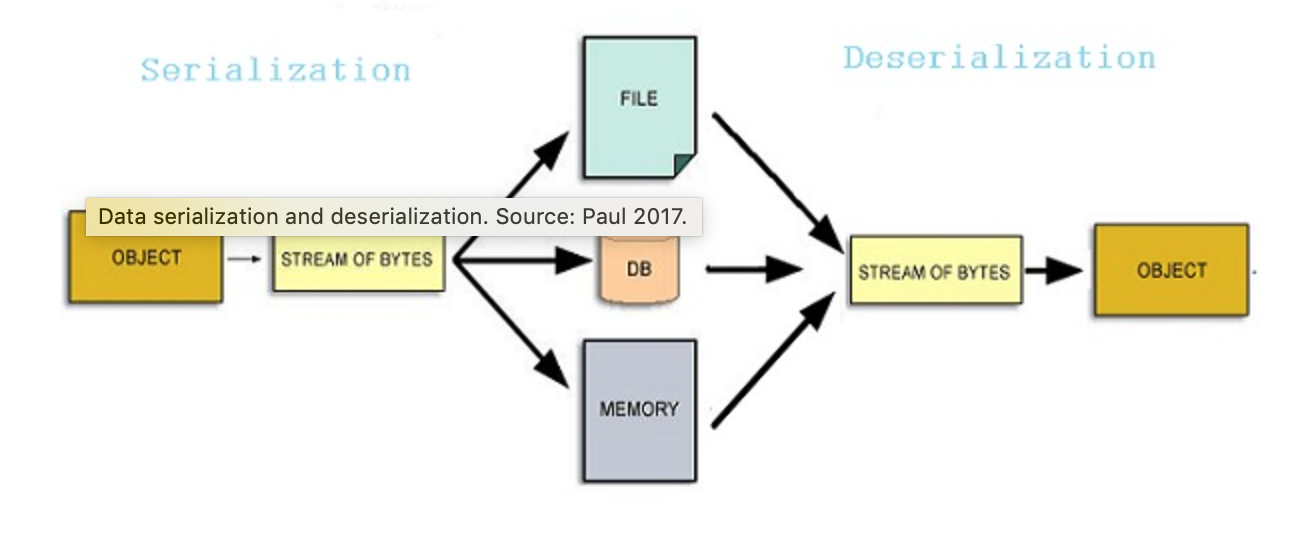Data Serialization
As we know, the computer reads, stores and processes data in the form of bits of 0s and 1s. Serialization is the name given to the process that converts any object state or data into a series of bits which it can easily store in memory or file formats. To transmit data to other computers, serialized data is used. Before serialization, an important consideration to take into account is whether the data should be nested or flat style. Common flat style data would be text files, csv files. Nested style data could be YAML and JSON files. Serialization uses a serialization format, which can be used for deserialization. Also, another important consideration when transferring data from one system to another is that computer systems can vary widely based on their Operating system, hardware components and internal binary formats for storage. Data serialization provides an efficient solution in this scenario.
There are many different serialization formats that can be chosen depending on speed, data constraints, human needs and storage. The commonly used formats are YAML, JSON, CSV, XML etc. Once the serialized data is transmitted and received, it needs to be deserialized at its destination. The deserialization uses the format to extract the original data or object state. These objects after deserialization are the clones of the original objects. The process of serialization and deserialization happens every time the computer has to handle any new data or processing operations.
Data Serialization and Deserialization
Picture Source: Devopedia

